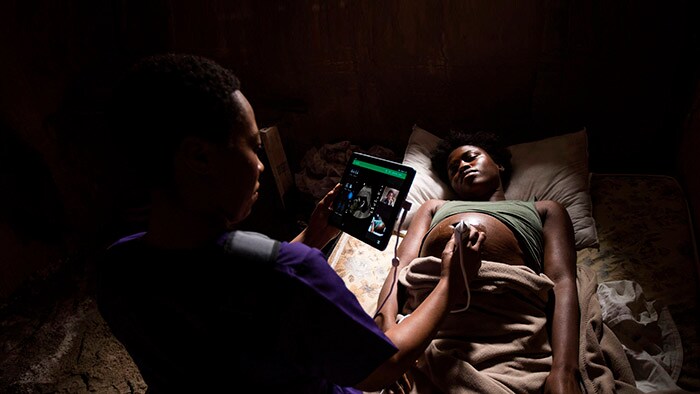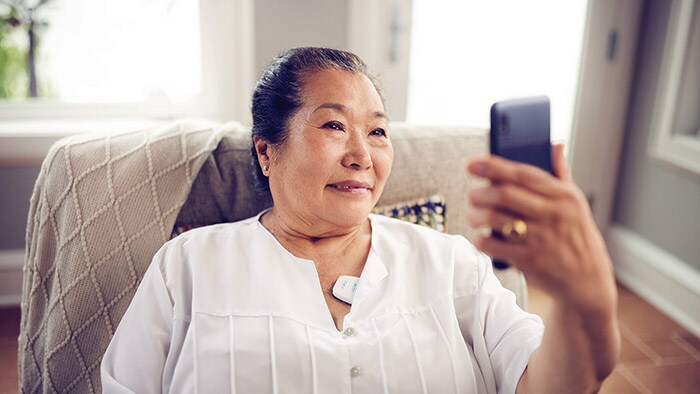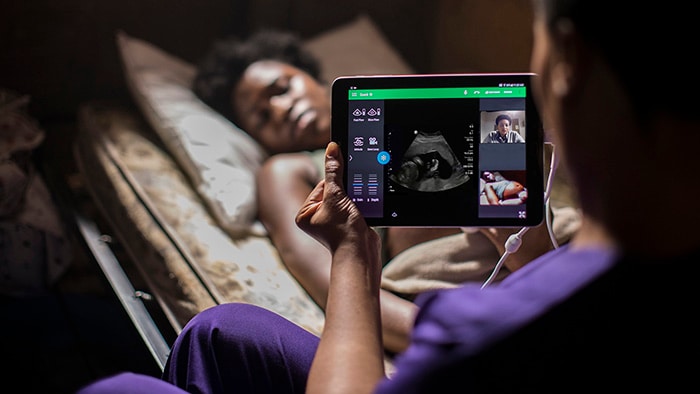As governments are still struggling to respond to COVID-19, climate events increasingly threaten human health. Record-breaking heatwaves, wildfires, floods, water scarcity, and polluted air materially impact people’s health[1] and strain global health systems already bogged down by extended pressure from the pandemic. And even before COVID arrived, health systems were burdened by the growing challenge of noncommunicable diseases, often chronic conditions that are expensive to manage. As needs keep rising, so do costs. Now is a good time to think about how to make our health systems resilient and (financially) sustainable. COVID-19 has unlocked massive healthcare spending, but crisis spending doesn’t equal health systems improvement, nor does it make health systems more resilient. How can our overburdened healthcare systems continue to meet swelling demands and future crises? For countries in the midst of crisis, it is understandably tough to deal with questions like this one. But we can’t wait until the end of the pandemic – new challenges are expected on the horizon. Now is the time for leaders to pause and figure out how to ensure healthcare systems can continue to be responsive in the face of increased – sometimes spiked – care demands. At the UN General Assembly this year, leaders will discuss recovery in the wake of COVID-19. The focus of these discussions must be on building health system capacity that is sustainable – both financially and environmentally. COVID-19 has exposed vast weaknesses in health systems around the world and has exacerbated gaps in quality and service.[2] As Dr. Matshidiso Moeti, the World Health Organization’s Regional Director for Africa, noted last year, “The coronavirus pandemic has proven once again the importance of investing in health systems, enhancing equitable access to care and improving readiness to prevent and control outbreaks.”[3]
Strong leadership and an orchestrated effort to bring all stakeholders to the table will be critical to drive decision-making. Moving forward, I believe the private sector will need to play a crucial role in the collective effort required to build resilient global health systems. Here are three resiliency-building strategies that, with active private sector engagement, could help strengthen health system capacity and deliver lasting impact:

Unlock investments in primary care
We already know that primary care can strengthen health systems, and, more importantly, improve people’s health. According to the World Bank, primary care can manage 90% of healthcare demands.[4] This makes it the most cost-effective way to address comprehensive health needs close to people’s homes and communities.[5] In addition, well-designed primary healthcare has the potential to help flatten the curve during a health crisis like COVID-19.[6] There is broad consensus that primary care is foundational to achieving universal health coverage (UHC) and creating a resilient healthcare system. Countries closest to achieving UHC have been the most resilient during the COVID crisis.[7] Therefore, to build resilient and sustainable health systems, we must find ways to unlock investments in primary healthcare. However, financing is the biggest bottleneck in expanding primary care, especially in emerging countries. Traditional funding models – grants and loans – are inadequate, while commercial loans are too expensive. And only a fraction of social impact investments goes toward funding primary care due to risk aversion of the investors. The question is how to create financing vehicles that unlock long-term investments in primary healthcare and ensure an acceptable return to the investors. The challenge is that primary healthcare is free in most emerging countries, so how would investments yield returns when patients don’t pay anything? Payment systems are generally run by governments who often reimburse at rates that are too low. Narrow returns, high initial costs, and reliance on government support can cause investors to see primary care as too high-risk. We need to find additional and reliable returns to lower investor risk. If investments have their return from system-sustaining funds – like reimbursement payments or insurance premiums – ‘topped up’ with alternative revenues, it could make primary care business models more viable and sustainable. An innovative financing vision called ‘double blended’ financing, which Philips developed together with Total Impact Capital, could help unlock much needed investments by strengthening both the investment and the revenue side (returns) of investments. A double blended approach involves using investment blending to cushion an investment and reduce early-stage risk, as well as revenue blending to minimize long-term risk and increase cash-flow sustainability. Philips and Total Impact Capital are partnering with the Health Finance Coalition to convert that vision into an initial double blended investment vehicle. The ambition is to make quality primary healthcare affordable and accessible across Africa by making it investable.

Improve health systems through digital transformation
While overall healthcare spending has increased in response to COVID-19, crisis spending isn’t sustainable. The traditional hospital-centric design of healthcare is no longer future-proof. Building a resilient healthcare system will require redesigning the service delivery model so people can access healthcare more efficiently, affordably, and closer to home. The digital transformation of healthcare can fuel this redesign and increase overall responsiveness and resilience. In fact, a resilient healthcare system will be a digital healthcare system. Adoption of digital technology by healthcare professionals, patients, and those seeking care has radically accelerated during the pandemic. Healthcare providers, in response to COVID-19, rapidly scaled up their virtual care capabilities. Digital triaging apps helped providers prioritize care while keeping their staff and patients safe. Telehealth and remote patient monitoring turned from a novelty into a necessity, enabling care providers and patients to stay connected in times of physical distancing.
Health solution innovators, like Philips, can help lead this transformation. A good example is the way Philips supported Netherlands GP practice ‘Midsland’ on the island of Terschelling. Through a combination of access to technologies and the remote support of specialists, these general practitioners are able to function as a 'remote hospital'. If a patient comes in with a broken wrist, the practitioner can make an X-ray that immediately can be shared with a remote traumatologist, radiologist or emergency doctor. This means patients don’t have to make the trip to the mainland for emergency care or medical imaging.
Digital technologies, data analytics, and patient-centered design provide new opportunities to deliver care in more efficient, cost-effective ways – like streamlining administrative processes and overcoming geographic barriers. Digital transformation has the potential to reorganize service delivery and connect disparate elements of the current fragmented health system.
However, as with all public infrastructure, governments will need to take a lead orchestrating role in the design of a future-proof digital healthcare architecture. It’s crucial governments step into that orchestrating role now, as hospitals are investing in digitalization, to avoid trapping systems in technological lock-ins and creating data silos that are difficult to unlock. This will be essential to realize the promise of digitalization in the long run.

Leverage public and private expertise via partnerships
The creation of resilient and sustainable healthcare systems that are digital by design will require careful thought, strategizing and above all partnership. Whether healthcare systems are centralized or decentralized, public or private, governments must play a strong orchestrating role amongst the many stakeholders, to guide this transformation. The private sector can be a critical partner during this transformation. But for governments to feel comfortable in engaging the private sector, it helps to enroll the support of a trusted partner, like the United Nations, as a broker of trust to facilitate the dialogue with the private sector. Alternatively, large partnership platforms, like the World Economic Forum’s Partnership for Health System Sustainability and Resilience (PHSSR) can also help broker public-private collaboration. The PHSSR provides a framework for measuring the resilience and sustainability of health systems at country level and it organizes country dialogue to help design healthcare systems that are able to prevent, respond to, and recover from acute and chronic crises, minimizing their impacts on health, social and economic wellbeing. A third option is to enlist the support of a specialist partnership, such as the Digital Connected Care Coalition (DCCC), a diverse coalition of more than 30 private and public member organizations. The DCCC aims to accelerate the digital transformation of healthcare in low- and middle-income countries by increasing private-sector engagement. Putting in place the right public-private partnerships now is essential - especially in the areas of investment and digitalization of service delivery, where technological developments are so incredibly fast. Governments that assume their role as orchestrator of the creation of resilient and sustainable health systems must also display the leadership to embrace the partnerships across all parts of healthcare to ensure the transformations are future-proof.

Build future health system resilience today
From innovative financing models to health technology solutions, the private sector can play a pivotal role in the global digital health transformation journey. But no-one can succeed on their own. Collaborations between public and private sector parties allow governments to leverage private sector investment and capacity to address system-wide problems in partnership that neither public nor private could tackle alone. [1] Climate Change and Social Inequality | United Nations
With the likelihood of even greater threats to human health looming, this is our chance to reflect, plan and act. Let’s use the UN General Assembly as a moment in time, in the middle of this crisis, to share learnings, cultivate the innovative partnerships formed during the crisis, and harness our collective strength and leadership to build more resilient and sustainable health systems.
[2] Well-designed Primary Health Care Can Help Flatten the Curve during Health Crises like COVID-19 (worldbank.org)
[3] Push for stronger health systems as Africa battles COVID-19 | WHO | Regional Office for Africa
[4] The missing link – the role of primary care in global health (nih.gov)
[5] https://www.who.int/docs/default-source/global-action-plan/accelerator2.pdf; PMAC | Prince Mahidol Award Conference (pmac2020.com)
[6] Well-designed Primary Health Care Can Help Flatten the Curve during Health Crises like COVID-19 (worldbank.org)
[7] Strengthening health systems resilience: key concepts and strategies (who.int)
Share on social media
Topics
Author

Jan-Willem Scheijgrond
Global Head of Government and Public Affairs Jan-Willem leads the global network of government and public affairs professionals at Philips. He heads up partnerships with international partners such as the United Nations and the World Health Organization.
Follow me on












